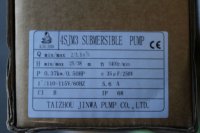Like Reach said, when you turn on the system for the first time, you will need to let the air out of a faucet, the same way you let the air in to drain the lines. But the pressure tank won't be a problem. If any air gets in the tank, it will come right back out the first time a faucet is open.
And pressure tanks do not make pressure. You will need a large enough pump to give the pressure and flow you need for the garden. But when you want to use something small like the soaker hose, you either need a very large tank to limit the pump cycling, or a CSV to eliminate the pump cycling. And you can use a CSV with or without a pressure tank, and the CSV will hold the same pressure on the soaker hose as it does on the large sprinkler zones.
The pressure tank with a CSV would just allow the pump to come on automatically when you open a faucet and go off when you close the faucets. Without the pressure tank/switch you will need to manually turn the pump on when you need water, and make sure to turn the pump off before or instead of closing the faucets. If you forget to turn off the pump and close all the faucets, the pump will melt down in about 5 minutes.

